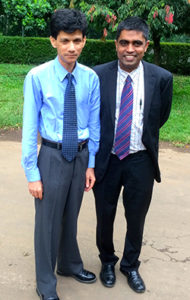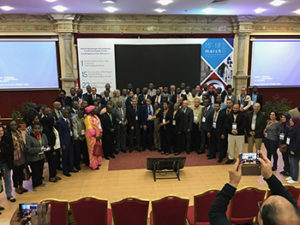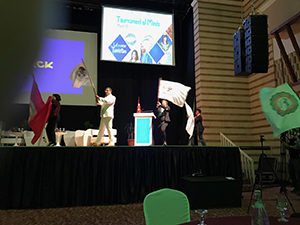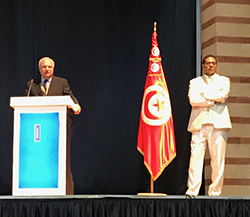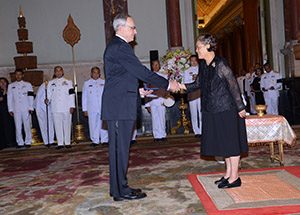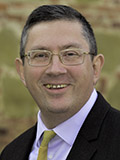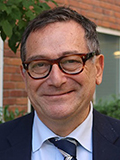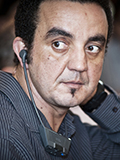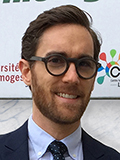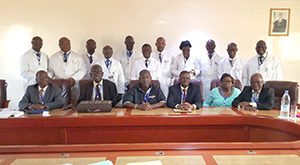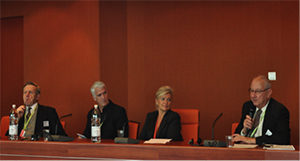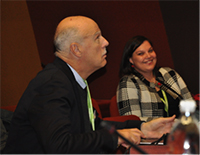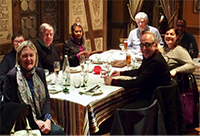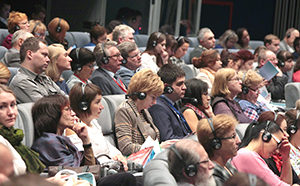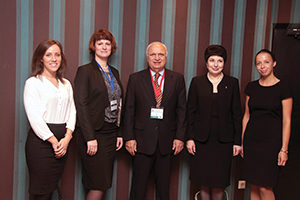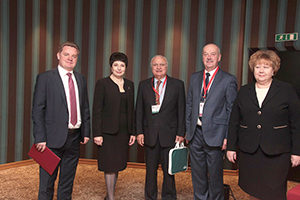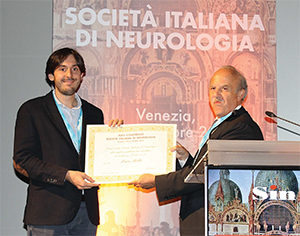By Marina Alpaidze, MD, PhD, and Alexander Razumovsky, PhD, FAHA
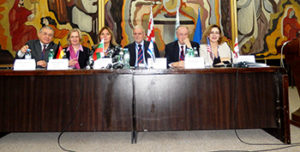
Participants at the third regional WFN NSRG meeting. (From left) Aleksandr Dzhanashvili, MD, PhD; Eva Bartels, MD, PhD; Ekaterina Titianova, MD, PhD, DSc; Natan Bornstein, MD, PhD; Alexander Razumovsky, PhD, FAHA; and Marina Alpaidze, MD.
The WFN Neurosonology Research Group (NSRG) is dedicated to the promotion of science and research as well as education and training in the field of ultrasonic techniques (carotid duplex and transcranial Doppler) and their clinical utilization. Therefore, international cooperation and the dissemination of scientific information within the field of neurosciences and neurosonology is part of the WFN NSRG activities.
On Oct. 22, 2016, the Georgian Chapter of the WFN NSRG successfully conducted its third regional meeting in Tbilisi, Georgia. The meeting included participants from the neighboring country of Azerbaijan. The one-day course was designed for individuals who are interested in performing and interpreting neurosonology studies.
The faculty discussed the current status of neurosonology and specific clinical applications, such as its clinical utilization on patients with dementia or an undetermined etiology of stroke. Relatively new aspects of neurosonology applications were discussed for patients with neuromuscular disorders and consequences of traumatic brain injury. Well-known neurologists and neurosonology experts delivered the lectures. These individuals included:
- Marina Alpaidze, MD, of Georgia, president of the WFN NSRG Georgian Chapter and president of Georgian Society of Neurosonology and Cerebral Hemodynamics
- Eva Bartels, MD, PhD, of Germany, vice chair for International Certification in Neurosonology
- Natan Bornstein, MD, PhD, of Israel, vice president of the World Stroke Organization and president of the European Society of Neurosonology and Cerebral Hemodynamics
- Aleksandr Dzhanashvili, MD, PhD, of the United States
- Tamar Janelidze, MD, PhD, of Georgia
- Alexander Razumovsky, PhD, FAHA, of the United States, secretary of the WFN NSRG
- Ekaterina Titianova, MD, PhD, DSc, of Bulgaria, president of Bulgarian Society of Neurosonology and Cerebral Hemodynamics
This third Georgian meeting was guided and directed under the auspices of the NSRG of the WFN and accredited by the Tbilisi Medical University Continuing Medical Education (CME) Board for 10 CME hours.
